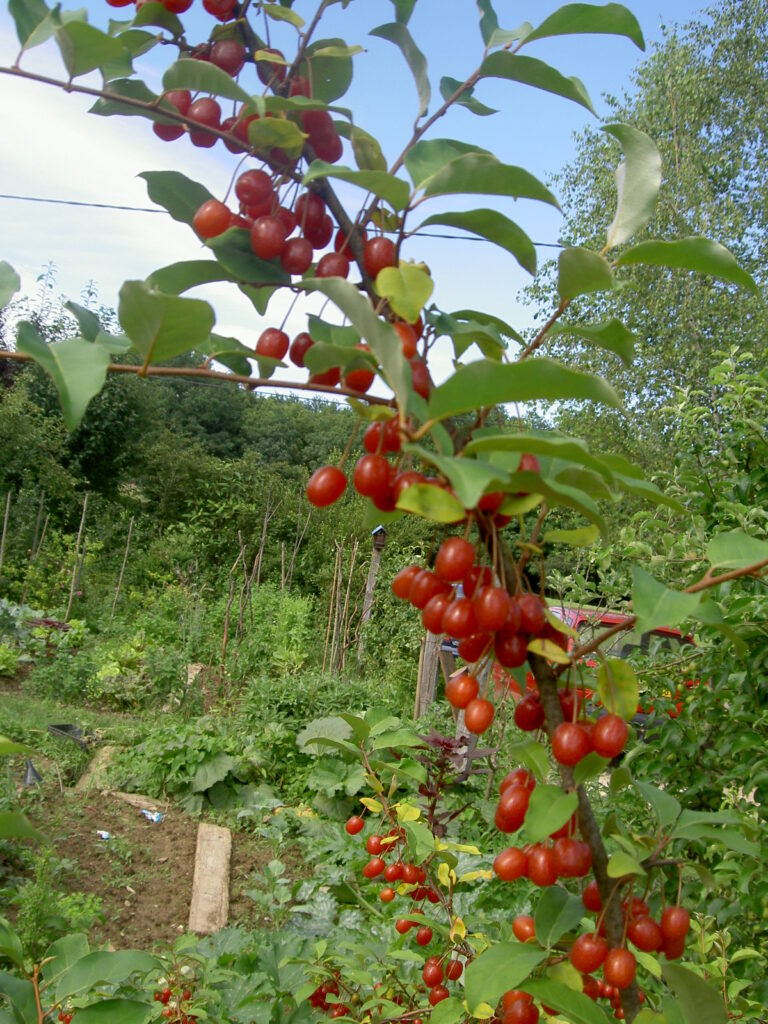This 6 ft. tall deciduous shrub bears thousands of juicy, red, pleasing tart fruits that
taste like a cherry pie has leaves with a silver underside. The berries themselves are 1-2 cm (0.5
in.) wide, round and bright red when the fruits ripen in high summer. Its pit is edible too. Goumi
berries are from the genus Elaeagnus, a group of plants that take nitrogen from the air and
fix it into the soil. This perennial of the Elaeagnaceae family is not to be confused with goji
berries though both have many health benefits. Each year in late spring, goumi is covered with
delicate, white-yellow, bell-shaped flowers with a similar fragrance to lilac. It is also known as
Cherry silverberry and Autumn olive. Goumi takes years to mature but has better roots for
mining minerals so it doesn’t require replanting every year. Goumi trees will provide food
for years without growing anew.






